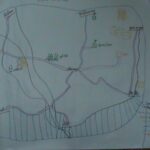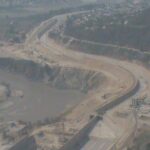PREPARATION OF MICRO PLANS OF 40 VILLAGES
PREPARATION OF MICRO PLANS OF 40 VILLAGES AFFECTED BY SRINAGAR HYDRO- ELECTRIC POWER PROJECT UNDER SRINAGAR CATCHMENT AREA TREATMENT (CAT) PLAN
INTRODUCTION AND BACKGROUND OF THE PROJECT
The hydro-power sector in India, especially in the Himalayan region, is undergoing rapid expansion, contributing significantly to the country’s energy landscape. Despite being regarded as a clean energy source, hydropower installations are intricately connected with local environmental conditions, exerting a reciprocal influence. Acknowledging these dynamics, the regulatory landscape has evolved over the years. Starting from 1994, the approval process for constructing Hydro-Electric Projects (HEPs) mandates the submission of an Environmental Impact Assessment (EIA) report. This is coupled with a requirement for public hearings to gather community perspectives and the formulation of Environmental Management Plans (EMPs) aimed at mitigating potential environmental repercussions and displacement impacts. One such critical facet of these plans is the Catchment Area Treatment (CAT) Plan. Rooted in the goal of augmenting environmental and watershed services derived from the catchment area, the CAT Plan serves as a linchpin for holistic project sustainability.
Governed by the Ministry of Environment & Forests, Government of India, the initiation and execution of Catchment Area Treatment Plans come under the purview of cases involving forest land diversion for both medium and major irrigation projects, as well as hydroelectric power projects. This falls under the ambit of the Forest Conservation Act (FCA), 1980. The CAT Plan stands as a pivotal document that encapsulates the ecological vitality of the catchment region. Integral to the effectiveness of the CAT Plan are initiatives centred around soil and moisture conservation, as well as comprehensive watershed management programs. These undertakings are meticulously designed to curtail soil erosion, ameliorate drainage systems, and rejuvenate ecosystems that may have experienced degradation within the catchment area. The ultimate aim is to strike a harmonious balance between the imperative for energy generation and the preservation of the ecological integrity of the surrounding environment.
AIMS AND OBJECTIVES OF THE PROJECT
1. Create comprehensive micro-plans for 40 villages that have been impacted by the Srinagar Hydro-Electric Power Project.
2. Engage a participatory approach that actively involves local communities, experts, and stakeholders to ensure well-rounded input.
3. Give prominence to addressing environmental and social considerations within the formulated micro-plans.
4. Put forth strategic interventions encompassing soil and water conservation, afforestation initiatives, and the identification of alternative livelihood opportunities.
5. Deploy the micro-plans as a strategic tool to facilitate the effective execution of the Comprehensive Afforestation and Tree Plantation (CAT) Plan, thereby fostering sustainable development and ameliorating the project’s ecological and social impact on the local communities.
COMPONENTS AND ACTIVITIES OF THE PROJECT
1. Develop micro-plans for 40 villages impacted by the Srinagar Hydro-Electric Power Project, aligning them with the Srinagar Catchment Area Treatment (CAT) Plan.
2. Adopt a participatory methodology, involving the active collaboration of local communities, experts, and stakeholders to effectively address environmental and social concerns and propose targeted interventions.
3. Submit the meticulously formulated micro-plans to the Forest Department for thorough evaluation and official endorsement.
4. Deploy the micro-plans as an essential tool to facilitate the successful implementation of the CAT Plan, contributing significantly to its objectives and overall outcomes.
TARGET AREA OF THE PROJECT
The project had its emphasis on 40 villages located within the Narendra Nagar Forest Division, all of which have been affected by the Srinagar Hydro-Electric Power Project. These villages are situated in the Tehri Garhwal district of the state of Uttarakhand.
TARGET GROUPS AND BENEFICIARIES OF THE PROJECT
The project’s scope encompassed the entire community residing in the 40 designated villages, which had been influenced by the Srinagar Hydro-Electric Power Project within the Narendra Nagar Forest Division. The objective was to engage them actively in the formulation of micro-plans, aiming to mitigate the project’s environmental impact and safeguard the interests of the local communities.
FUNDING PARTNER OF THE PROJECT
Funding for the project was provided by the Divisional Forest Officer (DFO), Narendra Nagar Forest Division, Department of Forests, Government of Uttarakhand.
SANCTIONED BUDGET OF THE PROJECT
The project received a sanctioned budget from the Divisional Forest Officer (DFO) of the Narendra Nagar Forest Division in 2012. The DFO approved the project assignment through a sanction order (No. 2570/3-19) on April 15, 2013. The total cost of the project for the assigned period of two months was Rs. 1,68,000.00.
OUTCOMES AND ACHIEVEMENTS OF THE PROJECT
The successful implementation of the assignment has led to the following outcomes and achievements:
1. Micro-plans have been prepared for 40 villages affected by the Srinagar Hydro-Electric Power Project under the Srinagar Catchment Area Treatment (CAT) Plan.
2. The micro-plans have prioritized environmental and social issues and proposed interventions, such as soil and water conservation measures, afforestation, and alternative livelihood opportunities.
3. The project has provided a comprehensive plan to address environmental and socio-economic impacts of the hydro-power project in the Srinagar catchment area.
4. The preparation of Micro Plans has provided a detailed understanding of the issues faced by the affected villages.
5. A participatory approach involving local communities, experts, and stakeholders was used to prepare the micro-plans, ensuring that their needs and perspectives were taken into account.
6. The micro-plans serve as a crucial tool for implementing the CAT Plan, promoting sustainable development, and minimizing the impact of the hydro-electric project on the environment and local communities.






























